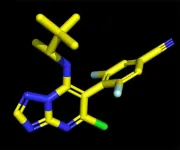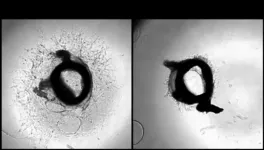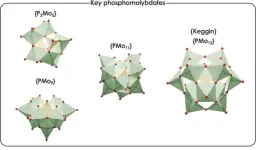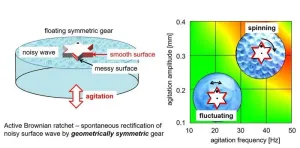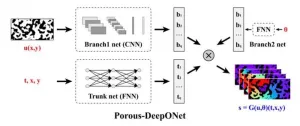(Press-News.org) Platelets are circulating cell fragments known to clump up and form blood clots that stop bleeding in injured vessels. Cardiologists have long known that platelets can become “hyperreactive” to cause abnormal clotting that blocks arteries and contributes to heart attack, stroke, and poor blood flow (peripheral artery disease) in the legs of millions of Americans.
Despite this major contribution to cardiovascular risk, routine measurement of whether each patient’s platelets clump (aggregate) too much has been infeasible to date. This is because results delivered by the method typically used to determine platelet activity, called platelet aggregometry, vary too much from lab to lab.
To address this challenge, a new studyled by researchers at NYU Grossman School of Medicine, precisely identified a group of patients with platelet hyperreactivity, and then surveyed them to reveal 451 genes the activity of which differed significantly in those with hyperreactive platelets versus those without. Publishing online August 20 in Nature Communications, the research team then used bioinformatics to assign a weight to each genetic difference and generate each patient’s Platelet Reactivity ExpresSion Score (PRESS).
“Our results demonstrate that our new platelet-centric scoring system can, for the first time and across populations, circumvent aggregometry to reliably predict platelet hyperreactivity and the related risk of cardiovascular events,” said corresponding study author Jeffrey Berger, MD, director of the Center for the Prevention of Cardiovascular Disease at NYU Grossman School of Medicine.
The researchers found that their new score can detect platelet hyperreactivity, both in patients at imminent risk of heart attack, and in healthy patients whose future risk may otherwise remain unknown.
“Physicians currently prescribe aspirin, a medication that counters platelet activity, to patients based on available risk factors, including high cholesterol or high blood pressure, which are not directly related to platelet function,” added Berger. “PRESS promises to help physicians confine anti-platelet treatment to the people most likely to benefit: those with platelet hyperreactivity.”
By acting on platelets, aspirin is known to protect against abnormal clotting, but in doing so, increases risk of bleeding, said the study authors. The field needs a reliable way to identify patients for whom protection against heart attack outweighs bleeding risk.
Platelet Score
Progress toward the design of the PRESS began with a shift in the field away from aggregometry methods that expose each patient’s platelets to high doses of proteins known to strongly encourage aggregation. Platelets that do not aggregate under these extreme conditions are labelled dysfunctional, but these tests were not designed to directly assess hyperreactivity.
Experience on Berger’s team and in other labs working with platelets led to a switch to an aggregometry method that instead exposes platelets to a very small dose (4 μM or microMolar) of epinephrine known to weakly encourage aggregation. The field settled on 60 percent aggregation in platelet sample at 0.4 μM of epinephrine as the threshold over which platelets would be designated as hyperreactive. While this method is not new, the current study provided new evidence that patients meeting this hyperreactivity definition are at much greater risk for cardiovascular events.
Specifically, the team used the newer, but still labor-intensive, aggregometry method to track the impact of platelet activity status on MACLE (major adverse cardiovascular and limb events), a composite measure of death, heart attack, stroke, and lower extremity amputations in patients enrolled in the Platelet Activity and Cardiovascular Events in PAD (PACE-PAD) clinical study. MACLE was measured in this group of high-risk patients after they underwent lower extremity revascularization (LER), a group of procedures that open blocked arteries.
In 254 PACE-PAD patients whose platelet aggregation was measured with 0.4 μM of epinephrine, 17.5% showed hyperreactive platelets, and those patients with hyperreactivity had more than double the incidence of heart attack, stroke, or acute limb ischemia or major amputation within the 30 days after LER than those without hyperreactivity.
While the team has an uncommon expertise in aggregometry, and despite these learnings, their goal was to create a generalizable measure of risk that could one day be easily performed in physicians’ offices. To make global implementation feasible, the researchers designed PRESS based on a genetic signature and independent of blood collection techniques and other variables that affect aggregometry.
To create PRESS, the researchers collected platelet genetic material from 129 PACE-PAD patients before their LER procedure and designed the score based on the genetic differences seen with hyperreactivity. The researchers confirmed the score’s accuracy by checking it against platelet aggregation tests.
To further validate PRESS, the team explored the link between the score and cardiovascular risk in several other patient groups. Among these was the Heart Attack Research Program, which enrolled women undergoing coronary angiography. In this group PRESS was found to be higher in those who had a heart attack than in those with stable coronary artery disease. Among patients with lower extremity atherosclerosis followed for an average of 18 months, patients with PRESS above the middle (average) score were 90% percent more likely to have a major cardiovascular event than those below it.
“In current practice, anti-platelet therapy is not routinely recommended for the prevention of a first heart attack or stroke, but a platelet-based test would help to identify patients at highest risk, and those who would benefit most from anti-platelet therapy to prevent a cardiovascular event,” says study author Tessa Barrett, PhD, assistant professor in the departments of Medicine and Pathology at NYU Langone. “Our score has the potential to further personalize cardiovascular disease risk prevention.”
Along with Berger and Barrett, study authors from the Department of Medicine at NYU Grossman School of Medicine were Macintosh Cornwell, Yuhe Xia, Matthew Muller, Nathaniel Smilowitz, Jonathan Newman, Florencia Schlamp, Caron Rockman, Kelly Ruggles, and, Judith Hochman, MD, associate director of the Leon H Charney Division of Cardiology. Also a study author was Deepak Voora, MD, of the Duke Center for Applied Genomics & Precision Medicine.
Support for this study was provided by the National Institutes of Health (NIH) grants R01HL114978, R35HL144993, R01HL167917, 5R01HL118049, and K23HL150315. The NYU CTSA grant UL1TR001445 from the National Center for Advancing Translational Sciences (NCATS) partly supported the study. The NYU Langone Health DART Genomic Technology Core is partially funded by NYU Cancer Center Support Grant NIH/NCI P30CA016087.
END
Blood platelet score detects previously unmeasured risk of heart attack and stroke
2024-08-20
ELSE PRESS RELEASES FROM THIS DATE:
New international Pioneer Centre for medical data research
2024-08-20
Can research on diseases as diverse as, for example, diabetes, cardiovascular diseases, psychiatric disorders and endometriosis be linked? The answer is yes if the research focuses on collecting and analysing large amounts of data from both Danish and international registers and biobanks to learn more about, among other things, risk factors, relationships, patterns, treatment and consequences.
And this is exactly what a new international Pioneer Centre, The Pioneer Centre for SMARTbiomed (Statistical and Computational Methods for Advanced Research ...
NIH awards $6.9 million to advance potential Alzheimer’s disease treatment
2024-08-20
A multidisciplinary team of scientists led by Carlo Ballatore, Ph.D., at University of California San Diego and Kurt Brunden, Ph.D., at the University of Pennsylvania has been awarded a $6.9 million grant from the National Institute on Aging (NIA) to prepare a potential disease-modifying Alzheimer’s treatment for future clinical trials. In a recently published study about the new compound, called CNDR-51997, the team found it was effective in restoring brain health in mouse models of Alzheimer's disease. CNDR-51997 was identified through a joint drug discovery program at Penn and UC San Diego that was supported by grants from the NIA.
The ...
iSN04: A novel nucleic acid drug for the treatment of vascular diseases
2024-08-20
Atherosclerosis, a major cause of mortality worldwide, involves an overgrowth of vascular smooth muscle cells in the blood vessels, constraining blood flow and potentially causing cardiovascular diseases. Against this backdrop, researchers from Shinshu University recently developed a DNA aptamer called iSN04 that targets and counteracts with the protein nucleolin in smooth muscle cells. This anti-nucleolin aptamer helps maintain smooth muscle cells in a differentiated state, offering new treatment potential for atherosclerosis and other vascular ...
New computational methodology to predict the complex formation of interesting nanostructures
2024-08-20
Researchers from the group of Prof. Carles Bo, at the Institute of Chemical Research of Catalonia (ICIQ-CERCA), have described a computational methodology that simulates complex processes involving different chemical species and diverse conditions. These processes lead to the formation of nanostructures called polyoxometalates (POMs), with important applications in catalysis, energy storage, biology and medicine.
"Our group has recently developed unique methods to study the chemistry of polyoxometalates in solution, their speciation and formation ...
Novel ratchet with geometrically symmetric gear driven by asymmetric surface wettability
2024-08-20
The ratchet mechanism is a fascinating energy-conversion system that converts disorderly or random motion into orderly, directed movement through a process known as spontaneous rectification. It is a critical component of mechanical systems, typically consisting of a gear and a pawl, which restricts the movement of the gear in one direction. In biological systems, the concept of a Brownian ratchet has been proposed to help understand the mechanism of molecular motors, where chemical reactions rectify the random thermal motion of molecules.
According to the second law of thermodynamics, uniform thermal ...
Porous-DeepONet: A deep learning framework for efficiently solving reaction-transport equations in porous media
2024-08-20
Porous media play a critical role in various industrial fields due to their complex pore networks and considerable specific surface areas. The transport and reaction phenomena within porous media are key factors influencing fundamental parameters such as energy storage efficiency, catalytic performance, and adsorption rates. To accurately describe these complex transport and reaction processes, solving parameterized partial differential equations (PDEs) is necessary. However, due to the complex structure of porous media, traditional methods, such as the finite element method ...
Association for Molecular Pathology files lawsuit against FDA to challenge final rule on regulation for laboratory developed testing procedures
2024-08-20
ROCKVILLE, Md. – August 19, 2024 – The Association for Molecular Pathology (AMP), the premier global molecular diagnostic professional society, and world-renowned pathologist Michael Laposata, MD, PhD, today announced the filing of a lawsuit challenging the recent U.S. Food and Drug Administration (FDA) Rule that regulates laboratory developed test (LDT) procedures as medical devices under the Federal Food, Drug, and Cosmetic Act. The lawsuit was filed in the U.S. District Court for the Southern District of Texas against the FDA; Robert M. Califf, MD, in his official capacity as Commissioner of Food and Drugs; the U.S. Department of Health ...
Using AI to find the polymers of the future
2024-08-20
Nylon, Teflon, Kevlar. These are just a few familiar polymers — large-molecule chemical compounds — that have changed the world. From Teflon-coated frying pans to 3D printing, polymers are vital to creating the systems that make the world function better.
Finding the next groundbreaking polymer is always a challenge, but now Georgia Tech researchers are using artificial intelligence (AI) to shape and transform the future of the field. Rampi Ramprasad’s group develops and adapts ...
Salk Professor Rusty Gage awarded 2024 Taylor International Prize in Medicine
2024-08-20
LA JOLLA (August 14, 2024)—Professor Rusty Gage has been awarded the 2024 J. Allyn Taylor International Prize in Medicine by the Schulich School of Medicine & Dentistry and the Robarts Research Institute at Western University. One of the most prestigious medical research awards in Canada, the Taylor Prize recognizes scientists for transformative, career-defining work in basic sciences, translational research, and medical innovations.
This year’s prize specifically honors a research leader in aging-related medical science and research—a long-term focus of Gage and his lab. Gage will receive $50,000 and be celebrated at a Robarts Research ...
Heart data unlocks sleep secrets
2024-08-20
We know that quality sleep is as essential to survival as food and water. Yet, despite spending a third of our lives in slumber, it largely remains a scientific mystery.
Not that experts haven’t tried.
Sleep analysis, also known as polysomnography, is used to diagnose sleep disorders by recording multiple types of data, including brain (electroencephalogram or EEG) and heart (electrocardiogram or ECG). Typically, patients are hooked up to dozens of sensors and wires in a clinic, tracking brain, ...
